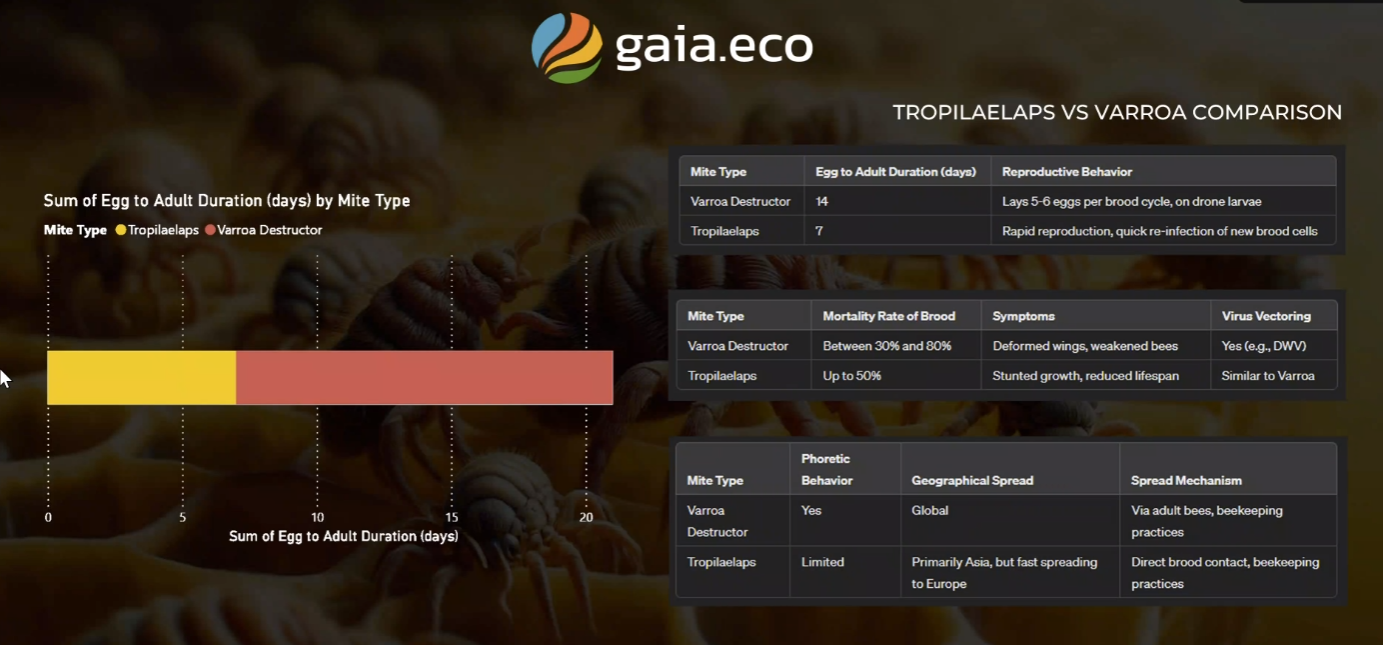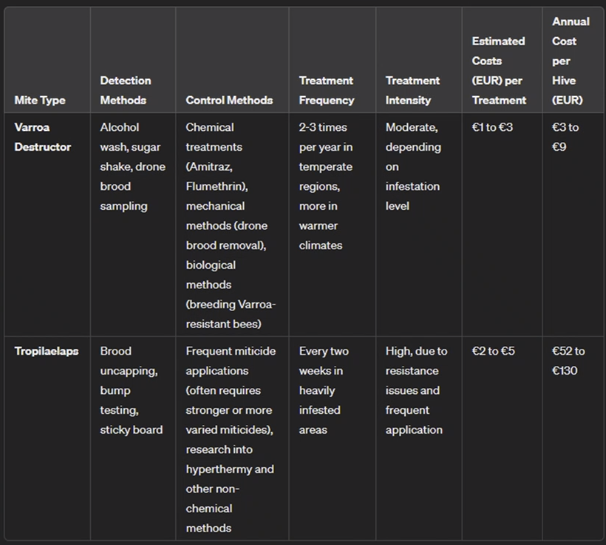🦀 Infestations
Beekeepers face numerous challenges when it comes to protecting their hives, with infestations of pests like Varroa destructor and Tropilaelaps mites being among the most detrimental. These parasitic mites invade beehives, feeding on the blood of honeybees, weakening the colony by spreading diseases such as deformed wing virus. The infestation often goes unnoticed until it has already caused severe damage, as the mites tend to remain hidden in brood cells. Without timely intervention, these mites can decimate entire hives, leading to significant losses for beekeepers and threatening pollination systems that are crucial to agriculture.
Another common threat to bee colonies comes from the wax moth, ants, and hive beetles. Wax moths feed on the bees' wax and brood comb, destroying the structural integrity of the hive and making it more vulnerable to further infestations. Ants can invade hives in search of honey, and their presence often disrupts the hive’s activity. Similarly, the hive beetle can damage combs and larvae, causing a loss of honey stores and spreading diseases that affect the bees. These pests often require constant monitoring and intervention, and their presence in a hive can lead to the weakening of the colony, reducing its overall health and productivity. For beekeepers, managing these infestations is crucial to maintaining strong, healthy colonies.


